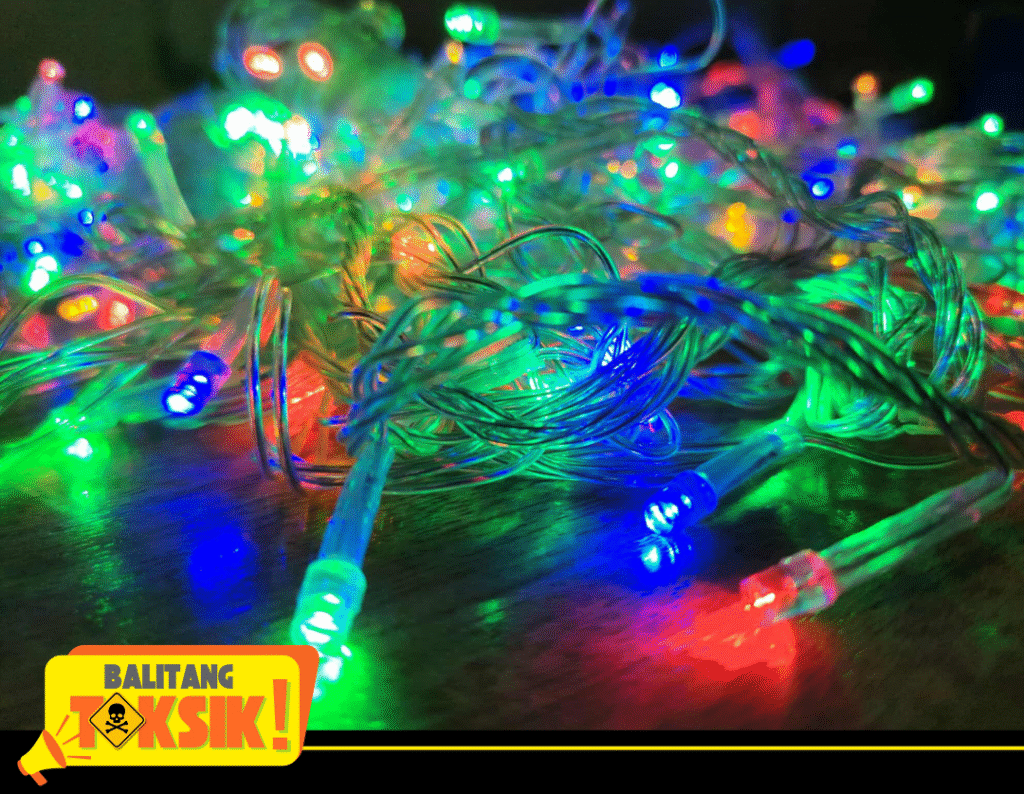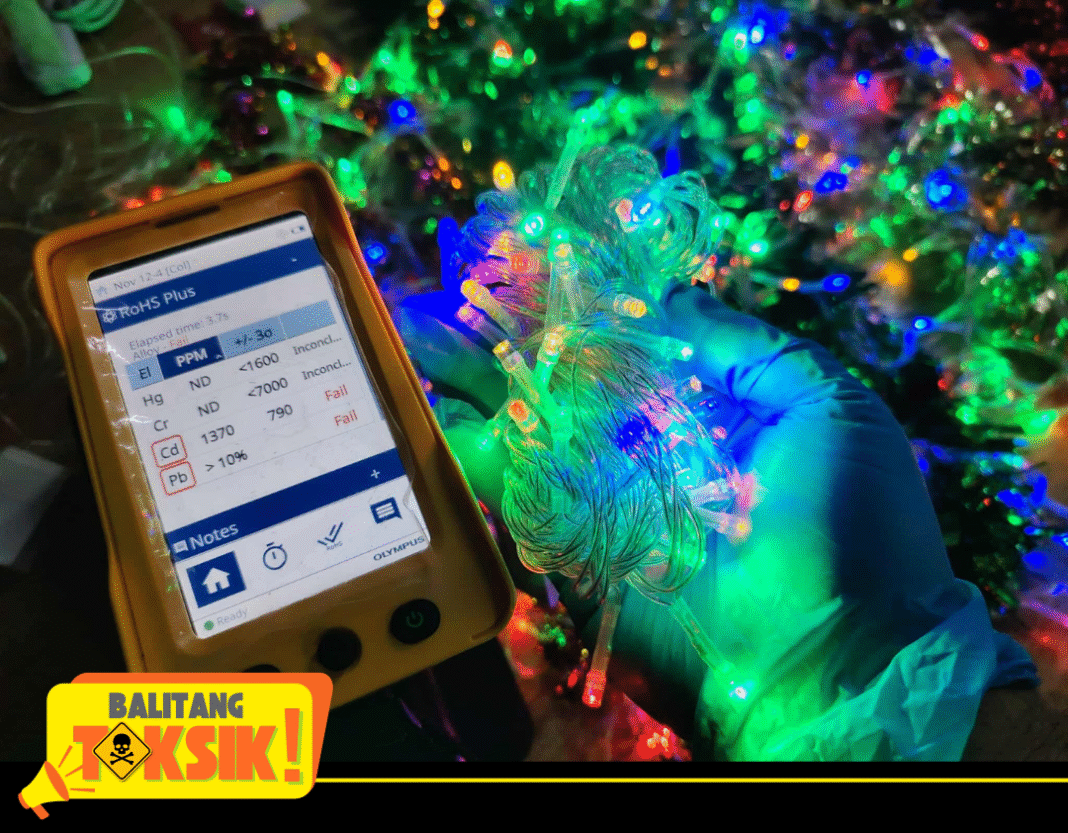With holiday decorations already making their way into households, environmental group BAN Toxics has issued a warning about potential public-health risks from Christmas lights containing hazardous chemicals such as lead.
In a recent market monitoring activity, the toxics watchdog purchased six samples of multi-colored Christmas lights sold in Metro Manila at a wholesale price of ₱100. The group noted that all the samples lacked Import Commodity Clearance (ICC) stickers, which certify product safety.

Using a Vanta C-Series XRF Analyzer, the group screened the lights and detected toxic lead levels of up to 100,000 parts per million (ppm) in the soldered LED bulbs, the polyvinyl chloride (PVC) wiring, and the soldered circuit boards.
Citing a WHO factsheet, lead poisoning is a major global health concern, especially for young children who absorb 4–5 times more lead than adults. Due to frequent hand-to-mouth behaviors, children are at higher risk of ingesting lead from dust, soil, and paint. Exposure can cause irreversible harm, including lower IQ, learning difficulties, developmental delays, organ damage, and in severe cases, death.
According to BAN Toxics, there are multiple potential pathways for lead exposure from these products. Handling lead-containing PVC wires can deposit lead residues on the skin, and repeated hand-to-mouth contact increases the risk of ingestion. PVC insulation can also degrade over time due to UV exposure, heat, or wear, especially in outdoor lights, releasing lead particles or dust.
Citing a report by UNICEF, they added that improperly discarded electronic products can introduce lead, especially from plastic wire insulation, into e-waste streams, contaminating soil, water, and air, thereby heightening risks for children and adults in nearby communities.
Although Philippine law does not yet regulate lead in electrical products, the group noted that the European Union’s Restriction of Hazardous Substances (RoHS) Directive sets international limits on hazardous substances, including lead, and can serve as a benchmark for evaluating the safety of such products.
The RoHS Directive restricts certain hazardous substances in electrical and electronic equipment (EEE), allowing a maximum concentration of 1,000 parts per million (ppm) of lead in any single component or material. In addition to lead, the directive also limits other hazardous chemicals such as cadmium, mercury, hexavalent chromium, polybrominated biphenyls, polybrominated diphenyl ethers, and several phthalates.
“We call the attention of the Department of Trade and Industry (DTI) to conduct market surveillance and verify if the Christmas lights being sold in the market comply with the Philippine National Standards (PNS), and to consider adopting regulations similar to the EU’s RoHS Directive to limit hazardous substances in electrical products,” said Thony Dizon, Advocacy and Campaign Officer of BAN Toxics.
He added that “product safety labeling and markings are important for consumers to determine the safety of the products and avoid exposure to toxic chemicals such as lead and other hazardous substances.”
Instead of buying colorful lights and decorations, BAN Toxics recommended celebrating the holiday season in a simple and eco-friendly way to reduce toxic chemical exposure and to practice the spirit of gift giving and compassionate love toward victims of typhoons and other calamities. (Mabuhay News Online)







